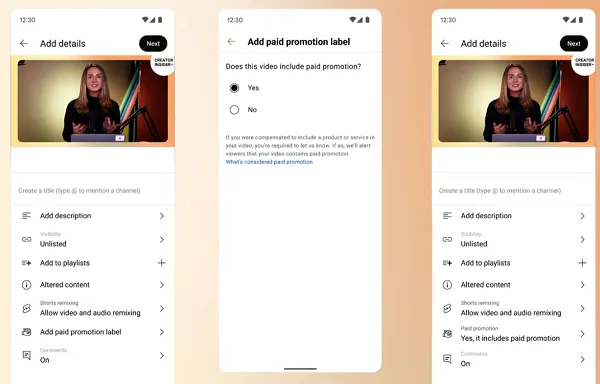

Real estate agents and US housing experts have had the date circled on their calendars for months: Aug. 17, when the terms of a class-action settlement over industry compensation practices will take effect.
The changes laid out in the agreement are technical, revolving around paperwork consumers complete at the beginning of the buying or selling process, and they add new wrinkles to an already complicated undertaking. Agents currently command a 5% or 6% fee that gets divvied up between both sides, but the rules are poised to shift power away from them, and drive down commissions over time.
“Agents have such great advantages over consumers in any negotiation,” said Stephen Brobeck, a senior fellow at the Consumer Federation of America. “The typical consumer doesn’t know what a reasonable commission is. Two percent is a good goal, and in some areas they can get it down to 1.5%.”
The US system for paying agents is an old sore spot for consumers, who have long complained that they paid higher commissions than buyers and sellers in other parts of the world. The industry, however, resisted change, until a Missouri jury found the National Association of Realtors liable for colluding to keep commissions high. The Department of Justice was also circling, arguing in a separate suit that buyer and seller commissions should be handled separately.
The NAR agreed to settle the Missouri suit in March, sending shockwaves through the industry. Experts predicted that the deal would lower consumer costs by as much as 30% and put armies of agents out of work. Others suggested brokerages would simply find loopholes.
In an interview, NAR President Kevin Sears said that while it will take time to determine the impact of the changes, government regulators are paying close attention to how they’re implemented.
“Anyone looking to skirt the rules,” he said, “let me just tell them the Department of Justice is going to be watching.”
For years, agents set their fees by a path of least resistance. Typically, sellers worked out commissions with their representatives, who split the payment with buyers’ agents. The fee was culled from the proceeds of a sale, giving sellers little reason to haggle. Buyers, who ultimately bore the cost, got almost no say in the matter.
That framework isn’t going away entirely. Under the new rules, sellers can no longer specify the commission they’re willing to pay to the buyer’s agent in the forms they fill out to publish a listing. And buyer’s representatives must enter written contracts with clients that spell out the commission at the beginning of the relationship.
Some states, including New Jersey and Indiana, have already implemented the changes, offering a window on how they’ll play out on the ground. Before a buyer goes to look at a house they’re interested in, their agents are calling ahead to find out if the seller is willing to cover the commission, said Jake Johnson, a Redfin Corp. broker in Indianapolis.
If the seller won’t pony up, buyers’ are less inclined to visit the property, Johnson said, limiting the number of bids that a home will receive and reducing the chance of getting the highest price. What’s more, sellers are generally focused on the final proceeds from the sale, once closing costs are paid, so they’re willing to cover buyer commissions if it generates better offers.
Forcing buyers’ agents to set their fees at the beginning of the process could have a larger impact. All other things equal, a buyer who offers $500,000 and asks the seller to rebate 2% for commission costs will be more appealing than one who makes the same bid but asks for a 3% concession.
“Now, buyers are the ones signing contracts,” said Ryan Tomasello, an analyst at Keefe, Bruyette & Woods. “A buyer who negotiates a lower fee with their agent is going to be more competitive.”
Commissions are already trending lower, perhaps due to the attention the settlement has generated. For the four weeks through July 14, Redfin estimated compensation averaging 2.55% for buyers’ agents, down from 2.62% at the beginning of the year. That decline has come as existing-home sales hover near historic lows, and it may be that agents are simply willing to accept lower fees to win business in lean times.
Brobeck said he doesn’t expect commissions to come crashing down as a result of the settlement. But over time, he envisions a system where buyers and sellers pay a base rate of 1% to 1.5% each, with add-on charges for services such as high-quality photography, or showing a buyer a large number of properties.
It’s not clear yet that buyers’ representatives would be willing to work for lower compensation, aside from at the discount brokerages that have been around for years with mixed success. Top agents won’t eagerly embrace reduced fees, especially since the settlement doesn’t alter the services they provide.
If fees do fall, it will likely be gradually. The growing pains will be apparent right away.
In New Jersey, which implemented the rule changes on Aug. 1, Farah Alli, a Hoboken-based broker with Story Residential at Compass, has been frustrated by new parts of the process. If she wants to show five properties to a client in one day, she has to call each seller’s agent to find out what the commission would be, and if they don’t pick up the phone, she may not show that home. It’s also awkward to set out the commission on the form.
“Often I’m connecting with people on the phone — they haven’t met me, they don’t know what a fabulous person I am,” Alli said. “And I have to tell them that I can’t help them until they sign the form.”
The extra work is a worthwhile price to pay for greater transparency, said Jennifer Johnson, who focuses on real estate transactions as an attorney at Flaster Greenberg PC in New Jersey.
“When I call to get my refrigerator fixed, the guy says, ‘I can fix it, here’s how much it will cost,’” Johnson said. “Talking about money is always uncomfortable, but it’s also good.”














